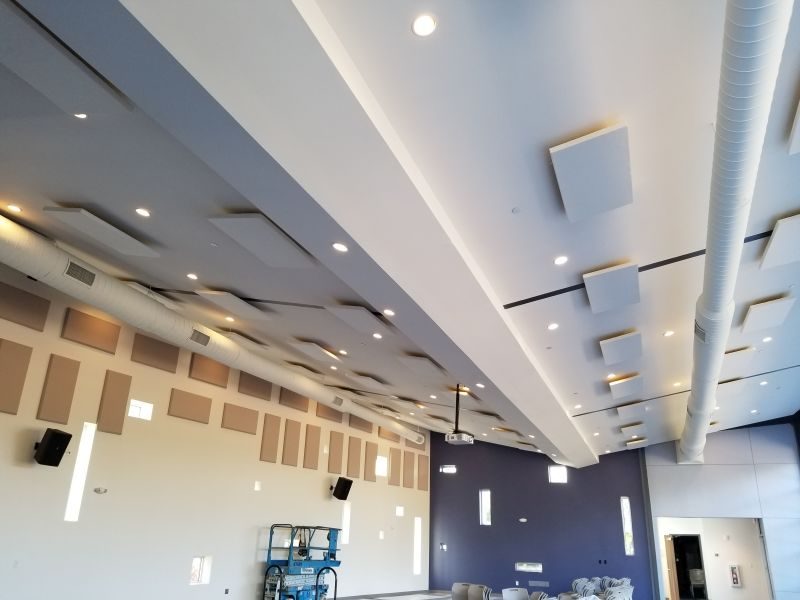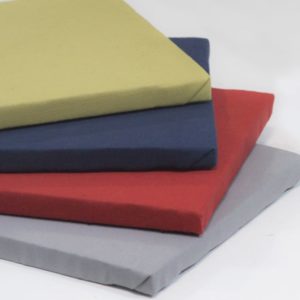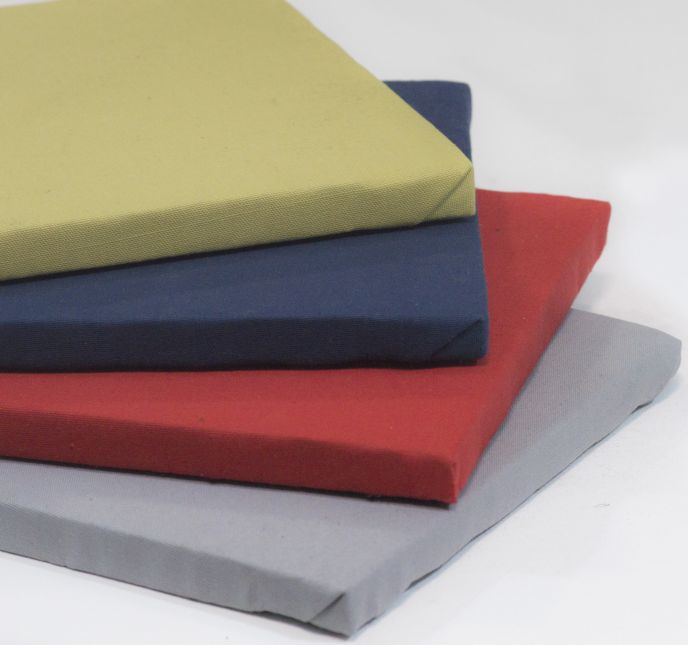One key area of acoustic treatment is sound absorption. Sound absorption is used in a wide range of projects, from schools and churches to restaurants and gyms. Acoustic Absorption is the amount of energy that is soaked up by a material and translated into heat. It is not reflected back toward the sound source, nor is it passed through.
See our Acoustic Absorption Case Studies today
NRC (Noise Reduction Coefficient) is a common measure used, and it is important to understand that it is not purely the amount of energy absorbed. Instead, it is the amount of energy that is NOT reflected. When sound energy hits a wall, the energy can be absorbed, reflected, or transmitted.
For Instance:
- One material may absorb 10%, reflect 10%, and allow 80% of energy to pass through.
- Another material absorb 20%, reflect 10%, and allow 70% of energy to pass through
Both materials can have the same NRC of 0.9, because 10% of the energy is reflected and 90% is not. Thus, NRC, while a good measure of reflectivity of a material, does not necessarily measure the amount of energy that is directly absorbed.
How much absorption do you need in your building?
Use our Acoustic Calculator to determine how much Sound Absorption is Needed
That is dependent on a number of factors, including:
- Building Use: Speaking locations require focused acoustic treatments so that listeners can hear and understand.
- Room Size: The larger the room size, the more acoustic treatment needed. Longer echoes occur in larger rooms
- Room Finishes: Dense, reflective surfaces will lead to longer reverberation, and therefore usually require more sound absorption

Acoustic Absorption Options
Absorption is commonly used to reduce echo in the room, but not block sounds. Therefore, the materials that help absorb sounds are light and fluffy. The products are designed to make the surfaces softer. Interestingly, there is a coefficient that helps determining the absorbing power of a material. However, sound frequency plays a huge role in this. There is a variety of absorbing materials, but the most generally used ones are the following three:
Acoustic panels are a possible fit for many general absorption needs. They are most effective at fixing acoustics in a single room. Keep in mind that they can be customizable, which is great for aesthetic reasons. If you realize that you require sound absorption, the next step should be to find out how much coverage you need to solve the issue. If you think you need some additional guidance, we will be glad to provide you a free acoustical consultation.
Acoustic Fabric Wall systems are also effective when treatment is required along an entire wall, from edge-to-edge or floor-to-ceiling. Since Acoustic Panels are fabricated at the factory, it is very difficult to have them fit perfectly between two obstructions. Acoustic fabric walls, on the other hand, are fabricated on site, by cutting the fabric to length and installing it over fiberglass panels into a custom-cut track system. Whenever there are obstructions, penetrations, or tight fits required, acoustic fabric wall systems are strongly encouraged.
This is a solution to improve overall acoustics within a single room as it absorbs multi-frequency noise. Another advantage of the acoustic foam is that it is extremely easy to install – you simply apply adhesive to the back of the foam panel and place it anywhere you’d like on a wall. The wedge pattern also allows for a more seamless look if panels were installed butted up to one another.
Why Use Acoustic Absorption Materials
Acoustic absorption treatment is ideal for spaces such as churches, gyms, auditoriums and restaurants. However, all of these different spaces would require unique treatment because they don’t all have the same acoustic requirements. You can determine the amount of absorptive material you need by determining the current reverberation time of a space as well as the target reverberation time.
Without the proper knowledge of acoustics, one could unintentionally over treat an area causing a dead space. A dead space would mean that 100% of all sound is being absorbed, eliminating all echo or reverberation. The goal of sound absorption treatments isn’t usually to eliminate all reverberation, it’s to change reverberation time to fit the space.



